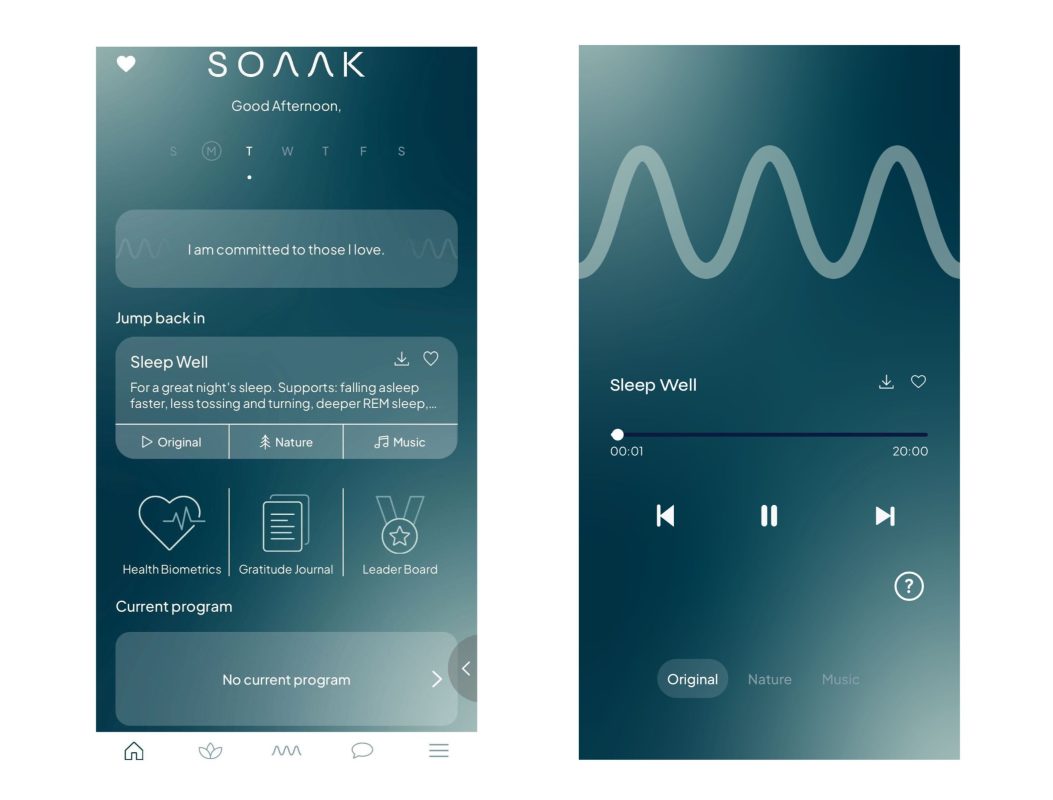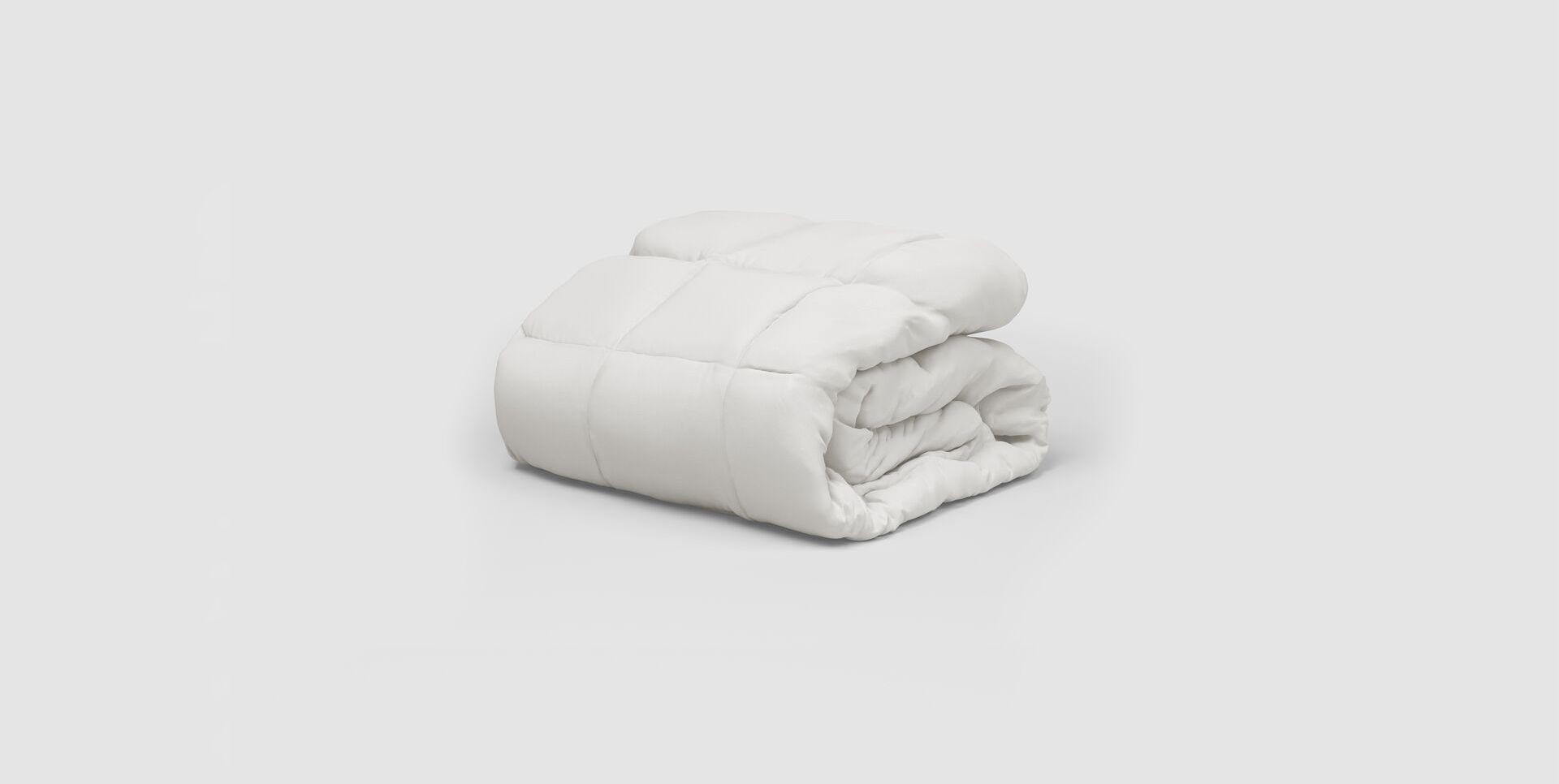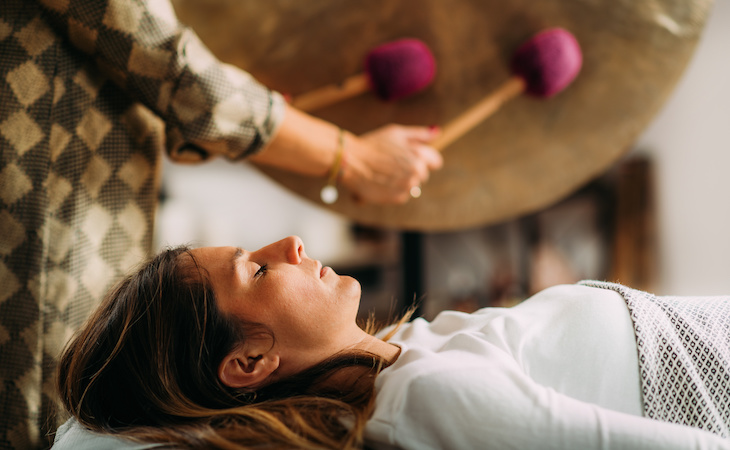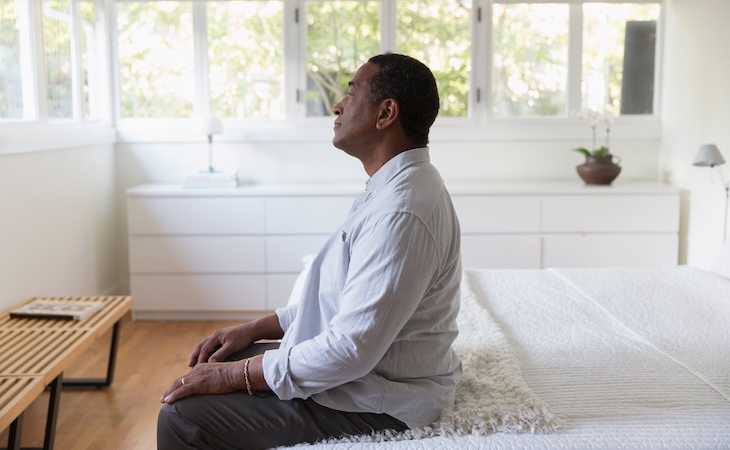A couple of years ago, a friend of mine invited me to a sound bath she was teaching in New York City. I had never been to one before, but as a fan of yoga and meditation (and someone who struggles with anxiety), the concept intrigued me.
Essentially, a sound bath is a meditative experience where attendees lie on their backs in Savanasa while they’re “bathed” in sound waves. These sound waves are produced by a variety of healing instruments, including gongs, singing bowls, chimes, tuning forks, and sometimes even the human voice.
It sounds a little woo-woo, I know—but it turns out there are some real research-backed benefits to this sort of sound therapy (also known as sound healing). And I can certainly attest to that fact: After my first sound bath with SonoKinetic Rising, I felt incredibly relaxed and slept deeper that night than I had in a long time. I loved the experience so much that I’ve been back three times!
Going to a sound bath isn’t the only way to reap the benefits of sound healing. Recently, I also had the opportunity to test out the Soaak mobile app, which offers Sleep Well sound frequency therapy as part of its programming. I was seriously impressed by how chill I felt and how easily I was able to fall asleep after listening to healing sound waves on the app for just 20 minutes a night before bed.
Interested in trying sound therapy for yourself? Ahead, learn more about how sound therapy works, its benefits for health and sleep, and how to incorporate sound therapy into your routine.
What is sound therapy?
You might be wondering: What exactly is sound therapy—and how does it work?
“Sound therapy is the use of specific instruments such as crystal alchemy bowls that shift the brain waves from alpha (attentive) or beta (active or anxious) to a delta (sleep) or theta (deeply relaxed state), relaxing the body to activate self-healing,” explains Pardis Partow, a sound healer, reiki master, and herbologist.
She adds that sound therapy has been around for many centuries and was first used by the ancient Egyptians.
What are the benefits of sound therapy?
Sound therapy has many health benefits. “Sound frequency therapy can effectively manage issues like anxiety, depression, sleep disturbances, and chronic pain,” says Laura Widney, Chief Innovation Officer for Soaak.
While that may sound (see what I did there?) too good to be true, the benefits of sound therapy are supported by research. For example, according to a study published in the International Journal of Psychotherapy Practice and Research, meditation featuring the use of Himalayan sound bowls was shown to improve relaxation and reduce tension, anger, fatigue, and depression in participants.
Widney notes that the Soaak app addresses the top 30 concerns her team saw day-to-day in the clinic. “Three particularly interesting applications are stress reduction, enhancing focus and creativity, and pain management,” she says. “Each composition utilizes specific frequencies to achieve targeted results, from lowering stress hormone levels to stimulating brain waves for improved mental performance and providing non-invasive pain relief.”
Widney adds that various sound frequencies can address different concerns by igniting different parts of the brain or tapping into your nervous system. “They can support cardiovascular health and increase oxygenation—and certain sound frequency therapies are even proven to increase aerobic capacity, muscle mass, and post-workout recovery,” she says.
“Sound frequency therapy can effectively manage issues like anxiety, depression, sleep disturbances, and chronic pain.”
Laura Widney, Chief Innovation Officer for Soaak
Can sound therapy improve your sleep?
Yes, sound therapy can improve sleep. This is something I experienced first-hand during the sound baths I’ve attended with SonoKinetic Rising, as well as through my use of the Soaak app at home.
“The frequency of certain instruments such as crystal alchemy bowls influence your brain waves to shift to a delta state, aka sleep state,” says Partow.
Widney adds that sound frequency therapy benefits sleep because it utilizes specific sound vibrations to positively impact the body and mind.
“The underlying principle is that everything in the universe, including our bodies, vibrates at a specific frequency,” she says. “When we are exposed to external, and unchanging sound frequencies, our body can synchronize with these vibrations, a process known as sympathetic resonance.”
Similarly, Widney says when our bodies are exposed to certain sound frequencies during therapy, they can align with these frequencies, bringing the body back into homeostasis.
“This alignment, or sympathetic resonance, can lead to various therapeutic effects,” she says. For example, certain frequencies can induce a state of deep relaxation, aiding in stress reduction, while others can help enhance mental focus and clarity.
“This natural and holistic approach taps into the body’s innate ability to harmonize with external frequencies, promoting healing and well-being,” says Widney.

How do you incorporate sound therapy into your routine?
There are two main ways you can practice sound therapy: You can either attend an in-person sound bath or listen to a sound bath before you go to sleep, says Partow.
If you’re looking to attend a south bath, you can typically find them at yoga or meditation studios or at wellness centers that offer other alternative treatments, such as acupuncture or reiki. Costs vary, but I’ve seen them anywhere in the $20-$80 per session range.
Whenever I go to one of my friend’s sound baths at SonoKinetic Rising, I wear comfortable clothes (like a T-shirt and leggings) and bring my favorite crystal with me as sound is supposed to help rid crystals of negative energy.
I look forward to spending an hour lying down on a yoga mat with my eyes closed (away from my phone) while various sounds wash over me. I’ve fallen asleep a couple of times and always feel so much more relaxed once the sound bath is over. I tend to get a great night of uninterrupted sleep afterward to boot.
As for listening to a sound bath at home, Partow says it’s a brilliant idea. I recently tested the Soaak app out for a week and was very happy with the results.
Soaak features clinically proven frequency compositions to help reduce stress, decrease anxiety, and boost energy. The Sleep Well sound frequency composition specifically supports falling asleep faster, less tossing and turning, deeper REM sleep, and waking up refreshed.
The sleep composition is 20 minutes long, and you have the option to listen to just the original sound frequencies or a version that layers nature sounds or music over the frequencies.
To make the most of my at-home sound therapy using Soaak, I got into my most comfortable pajamas, set out a lavender diffuser on my nightstand, and cozied up under my

Plush and breathable all-season comforter/duvet insert
a half hour before my normal bedtime of 11:30 pm.
As someone who spends a lot of time on their phone, I wasn’t sure if I’d be able to disconnect for the full 20 minutes without picking up my device. But the sounds put me into a more relaxed state very quickly and the 20 minutes really flew by every night. I didn’t feel the urge to pick up my phone once.
By the time my sound frequency therapy session was over, I could sense that my tension had melted away. I was super sleepy and drifted off in just a few minutes, waking up the next morning feeling re-energized.
Sometimes, I find myself waking up in the middle of the night with anxiety, but I didn’t experience that during my test period of using the Soaak app.
I’m also starting to explore some of the other sound frequencies on the Soaak app. Some of the other options that are most appealing to my needs are anti-anxiety, mental clarity, digestion support, and self-confidence.
While I received a free trial to use the Soaak app, it’s one I’d recommend if you’re looking for a non-medical way to help reduce anxiety and improve sleep.
The app costs $29.99 per month with unlimited use for various sound frequency therapies. You can pair the frequencies with nature sounds or music and stream the sounds on iOS, Android, Alexa, or Roku.
FAQs
Does sound therapy really work?
Yes, sound therapy works. Research shows it can help improve relaxation and reduce tension, anger, fatigue, and depression.
Why is sound healing so powerful?
Sound healing is powerful because it can alter your brain waves. It shifts your brain waves from an attentive, active, or anxious state into a deeply relaxed or sleepy state. This can help relax the body so it can activate self-healing.
What are four benefits of sound healing?
Sound healing has many potential benefits. Four of the top benefits include improved sleep, reduced anxiety, reduced depression, and less chronic pain.
Another wellness treatment that can help you catch Z’s? Cold therapy! Learn all about the benefits of cold therapy for sleep.




